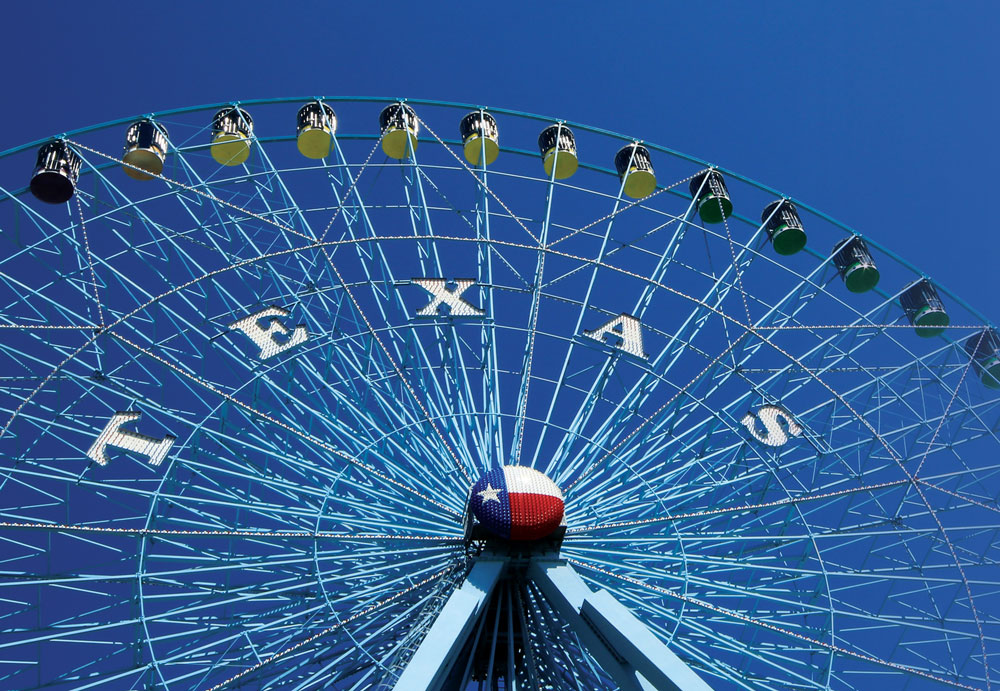
Did you know the State Fair of Texas didn’t originate in Dallas? Actually, it started in Corpus Christi in 1852 as the Lone Star Fair. At that time, there were a few small businesses and roughly 700 people living
in this town. The Lone Star Fair event is thought to have primarily occurred on Corpus Christi’s beach. Although it is difficult to fathom, this is how and where the tradition began.
One of Corpus Christi’s founders, Colonel Henry L. Kinney, desired to share this beautiful area because he thought not many Texans knew about this location. He believed a state fair held by the town would attract people, and once they saw the paradise, they would be sold. He became the fair’s manager and convinced a number of well-known citizens to participate in the project.
The Lone Star Fair advertised extensively by distributing flyers throughout the world, promising a variety of entertainment, food and contests. Appealing awards were offered to promote competitive displays and excellent agricultural entries at the fair. Many of the ranchers, farmers and inventors from across the state showed up to the festivities with a spirit of competition ready to perform or exhibit their creations.

After the fair, there were mixed reviews from the press and significant financial losses. Since the negative outweighed the positive, Corpus Christi didn’t move forward with the fair the next year. Also, decades later, a story of a man being shot in the final hours of the Lone Star Fair was revealed, shedding light on the behaviors during the celebration.
The next Texas state fair was held in Dallas seven years later, in 1859. About 2,000 participants took part. The exhibits featured items from rural life, such as farming tools, basic clothing and fresh crops. However, it ended because of financial difficulties, just like the Lone Star Fair.
The following fair wasn’t held for some time, but it finally happened in Houston on the Buffalo Bayou in 1870. As a result of the event’s instant success, organizers moved to a larger location north of the city two years later and developed a grandstand and racetrack. In order to transport residents from downtown to the festival’s entrance, Houston constructed a streetcar line. However, as fate would have it, an economic collapse and a yellow fever epidemic in the late 1870s resulted in the cancellation of the fair.
The state fair moved from Houston to Dallas in 1886 because of the foresight of Dallas business leaders. One of them bought 80 acres in East Dallas for the fair, but other organizers preferred a location farther north. Arguments soon ensued between the businessmen, and they were unable to come to terms. On October 26, 1886, the site of the current Fair Park became the new location of William H. Gaston’s Dallas State Fair. The previous day, in what is now Uptown, the competing Texas State Fair and Exposition occurred. Despite both fairs boasting good attendance, the competition resulted in neither of them being able to cover costs, so the next year, the two groups amalgamated to form the State Fair of Texas.
Today, the State Fair of Texas consistently attracts over 2 million attendees yearly. Such enthusiasm from the public has served as motivation to grow the fair’s activities over the years. The fair offers opportunities to take part in football games, pig races, pee wee stampedes, pumpkin painting, walking through the livestock barns, visits to the green house, backyard circus, little hands on the farm, children’s barnyard, illumination sensation, starlight parade, riding the Ferris wheel, auto shows, taking a picture with Big Tex and more. Another appealing aspect of the fair is the food. Over the years, the corn dog, smoked turkey leg and funnel cake have become the classics, whereas new creative food vendors make unique fried items each year — like fried peanut butter and jelly sandwiches, fried Coke, fried cookie dough, fried beer and fried bubblegum. This intrigues many attendees. These things keep the people attending because they desire to taste or encounter the next big thing or keep the tradition going for the next generation.
Sources:
1. bigtex.com
2. texasmonthly.com
3. dmagazine.com
4. texasproud.com
Written by Sandra Walters

You must be logged in to post a comment.